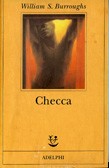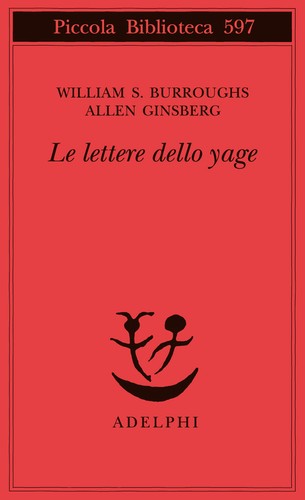William Seward Burroughs II (; February 5, 1914 – August 2, 1997) was an American writer and visual artist, widely considered a primary figure of the Beat Generation and a major postmodern author who influenced popular culture and literature. Burroughs wrote eighteen novels and novellas, six collections of short stories and four collections of essays, and five books have been published of his interviews and correspondences; he was initially briefly known by the pen name William Lee. He also collaborated on projects and recordings with numerous performers and musicians, made many appearances in films, and created and exhibited thousands of visual artworks, including his celebrated "Shotgun Art".Burroughs was born into a wealthy family in St. Louis, Missouri. He was a grandson of inventor William Seward Burroughs I, who founded the Burroughs Corporation, and a nephew of public relations manager Ivy Lee. Burroughs attended Harvard University, studied English, studied anthropology as a postgraduate, and attended medical school in Vienna. In 1942, Burroughs enlisted in the U.S. Army to serve during World War II. After being turned down by the Office of Strategic Services and the Navy, he developed a heroin addiction that affected him for the rest of his life, initially …
William S. Burroughs
Dettagli autore
- Alias:
-
ויליאם ס בורוז, William Lee, וילים ס בורוז, e 34 altri
Viljams Berouzs, 윌리엄 S. 버로스, Uilʹi︠a︡m Berrouz, 威廉·柏洛茲, Burroughs, Уильям Берроуз, ウィリアム バロウズ, ویلیام بورو دوم, ウイリアム・S バロウズ, উইলিয়াম বাৰোজ, ウィリアム・S・バロウズ, Уилям Бъроуз, William Burroughs, Willy Lee, विलियम एस बरोज, ויליאם ס. בורוז, უილიამ სიუარდ ბეროუზი, Уильям Барроуз, Уільям С'юард Бероуз, William S. Burroughs, Uilʹi͡am Berrouz, William S. Burroughs II, Γουίλιαμ Μπάροουζ, William Seward Burroughs, Gulielmus Seward Burroughs II, Уильям Сьюард Берроуз, ويليام بوروز, Vilijem S. Barouz, Wilyām Burūz, W. S. Burroughs, Ուիլյամ Սյուարդ Բերրոուզ, Вільям Барроуз, Берроуз, Ouiliam Baroouz - Nascita:
- 05 Febbraio 1914
- Morte:
- 02 Agosto 1997
Collegamenti esterni
William Seward Burroughs II (; February 5, 1914 – August 2, 1997) was an American writer and visual artist, widely considered a primary figure of the Beat Generation and a major postmodern author who influenced popular culture and literature. Burroughs wrote eighteen novels and novellas, six collections of short stories and four collections of essays, and five books have been published of his interviews and correspondences; he was initially briefly known by the pen name William Lee. He also collaborated on projects and recordings with numerous performers and musicians, made many appearances in films, and created and exhibited thousands of visual artworks, including his celebrated "Shotgun Art".Burroughs was born into a wealthy family in St. Louis, Missouri. He was a grandson of inventor William Seward Burroughs I, who founded the Burroughs Corporation, and a nephew of public relations manager Ivy Lee. Burroughs attended Harvard University, studied English, studied anthropology as a postgraduate, and attended medical school in Vienna. In 1942, Burroughs enlisted in the U.S. Army to serve during World War II. After being turned down by the Office of Strategic Services and the Navy, he developed a heroin addiction that affected him for the rest of his life, initially beginning with morphine. In 1943, while living in New York City, he befriended Allen Ginsberg and Jack Kerouac. Their mutual influence became the foundation of the Beat Generation, which was later a defining influence on the 1960s counterculture. Burroughs found success with his confessional first novel, Junkie (1953), but is perhaps best known for his third novel, Naked Lunch (1959). Naked Lunch became the subject of one of the last major literary censorship cases in the United States after its US publisher, Grove Press, was sued for violating a Massachusetts obscenity statute. Burroughs killed his second wife, Joan Vollmer, in 1951 in Mexico City. Burroughs initially claimed that he shot Vollmer while drunkenly attempting a "William Tell" stunt. He later told investigators that he had been showing his pistol to friends when it fell and hit the table, firing the bullet that killed Vollmer. After Burroughs returned to the United States, he was convicted of manslaughter in absentia and received a two-year suspended sentence. While heavily experimental and featuring unreliable narrators, much of Burroughs' work is semiautobiographical, and was often drawn from his experiences as a heroin addict. He lived variously in Mexico City, London, Paris and the Tangier International Zone near Morocco, and traveled in the Amazon rainforest, with these locations featuring in many of his novels and stories. With Brion Gysin, Burroughs popularized the cut-up, an aleatory literary technique, featuring heavily in works such as The Nova Trilogy (1961–1964). Burroughs' work also features frequent mystical, occult, or otherwise magical themes, which were a constant preoccupation for Burroughs, both in fiction and in real life.In 1983, Burroughs was elected to the American Academy and Institute of Arts and Letters. In 1984, he was awarded the Ordre des Arts et des Lettres by France. Jack Kerouac called Burroughs the "greatest satirical writer since Jonathan Swift"; he owed this reputation to his "lifelong subversion" of the moral, political, and economic systems of modern American society, articulated in often darkly humorous sardonicism. J. G. Ballard considered Burroughs to be "the most important writer to emerge since the Second World War", while Norman Mailer declared him "the only American writer who may be conceivably possessed by genius".




